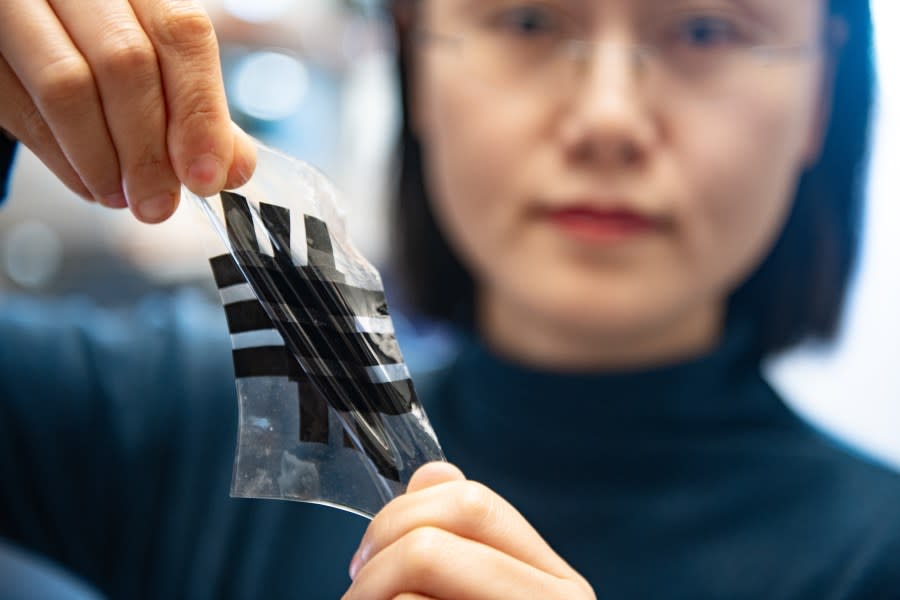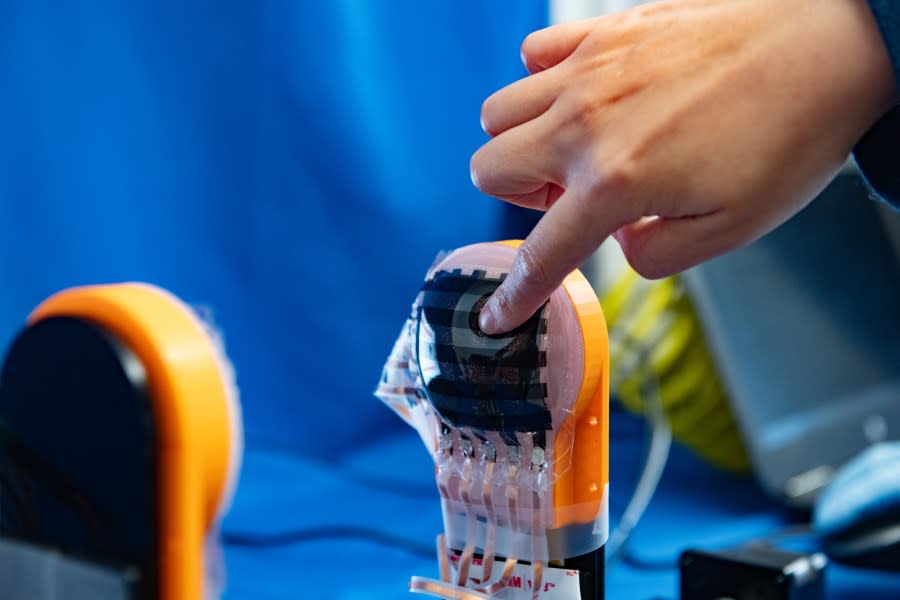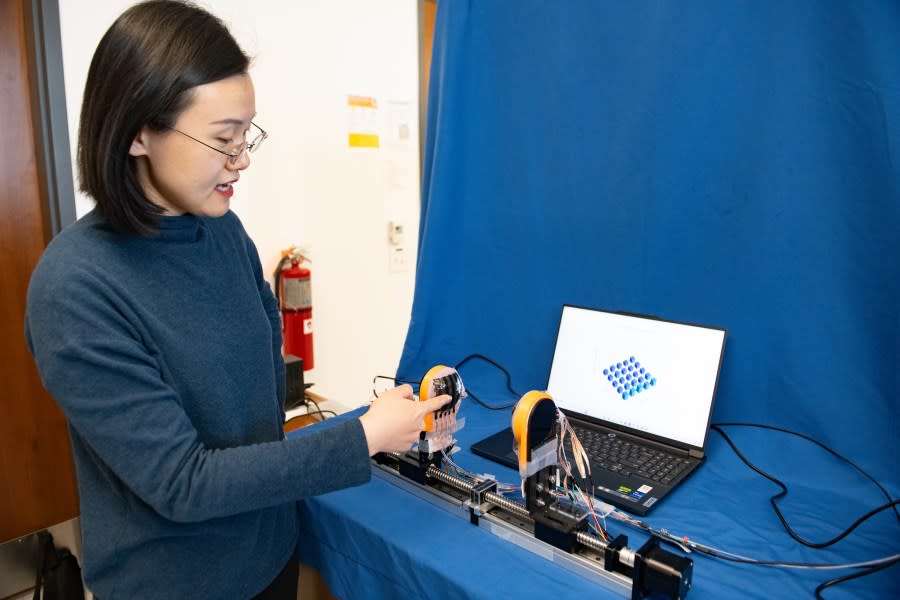Stretchable electronic skin for robots developed by UT researchers

AUSTIN (KXAN) — A first-ever stretchable electronic skin was developed by researchers at the University of Texas at Austin.
According to UT, the skin could give robots the same softness and touch sensitivity that humans have.
In a press release, the university said existing e-skin technology loses sensing accuracy as the material stretches.
“Much like human skin has to stretch and bend to accommodate our movements, so too does e-skin,” said Nanshu Lu, a professor in the Cockrell School of Engineering’s Department of Aerospace Engineering and Engineering Mechanics who led the project.
UT said this technology could help robots perform life-saving measures during disasters. (Photo: The University of Texas at Austin) UT said this technology could help robots perform life-saving measures during disasters. (Photo: The University of Texas at Austin) UT said this technology could help robots perform life-saving measures during disasters. (Photo: The University of Texas at Austin) UT said this technology could help robots perform life-saving measures during disasters. (Photo: The University of Texas at Austin)
Where would these robots go?
Lu said this could be used as part of a robot’s hand and applied to, “medical care, where robots could check a patient’s pulse, wipe the body or massage a body part.”
In the future, Lu said we’ll have more elderly people than available caregivers. She said that’s where these robots could step in.
“We need to find new ways to take care of people efficiently and also gently, and robots are an important piece of that puzzle.”
Nanshu Lu, Cockrell School of Engineering
Lu said robots could also be deployed during disasters where there are search and rescues.
“They could search for injured and trapped people in an earthquake or a collapsed building, for example, and apply on-the-spot care, such as administering CPR,” the news release said.
How does it work?
Electronic skin technology senses pressure from contact and lets the robot know how much force to use when grabbing something.
“When conventional e-skin is stretched, it also senses that deformation. That reading creates additional noise that skews the sensors’ ability to sense the pressure. That could lead to a robot using too much force to grab something,” the release said.
In this case, the UT researchers were able to develop e-skin that stretches and the pressure response doesn’t change.
Lu and her team are working on potential applications for this technology. Specifically, they are working to build a robotic arm with the e-skin.
For the latest news, weather, sports, and streaming video, head to KXAN Austin.





